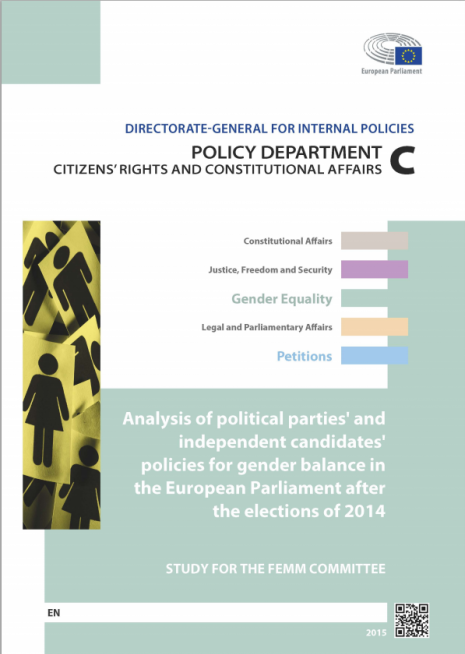
Analysis of European Parliament's gender balance after the Elections of 2014
This study explores the results of the 2014 European Parliament elections in terms of gender balance of MEPs.
Women represent currently 37% of the members of the European Parliament (277 out of 751). This study, commissionned by the Women rights and gender equality (FEMM) committee , explore the situation more in depth by analysing case studies and statistical analyses of the election results.
Key findings of the study are :
- The underrepresentation of women in parliament is largely due to the underrepresentation of women in the candidate base. This problem can be addressed by actions of political parties when establishing their party lists.
- Political parties are the main enablers as well as barriers to women being elected as MEPs.
- Women are frequently left out of party candidate lists and, even if they are included, are often given low list positions; this is a key barrier to gender balance in the European Parliament.
- Political parties often act to ‘champion’ certain candidates that are frequently male; this can disadvantage women candidates who have often garnered support over many years through grassroots organisations.
- Based on regression analyses of candidate data, quotas appear to improve women’s probability of being elected.
- Based on regression analyses of candidate data, women who are given first place in party lists are slightly more likely than men to be elected, particularly where quotas are also used to construct those party lists.
Attachment:
Read more:
Country:
European Union

